Soviet dreams: London's Design Museum delves deep into lost Russian architecture
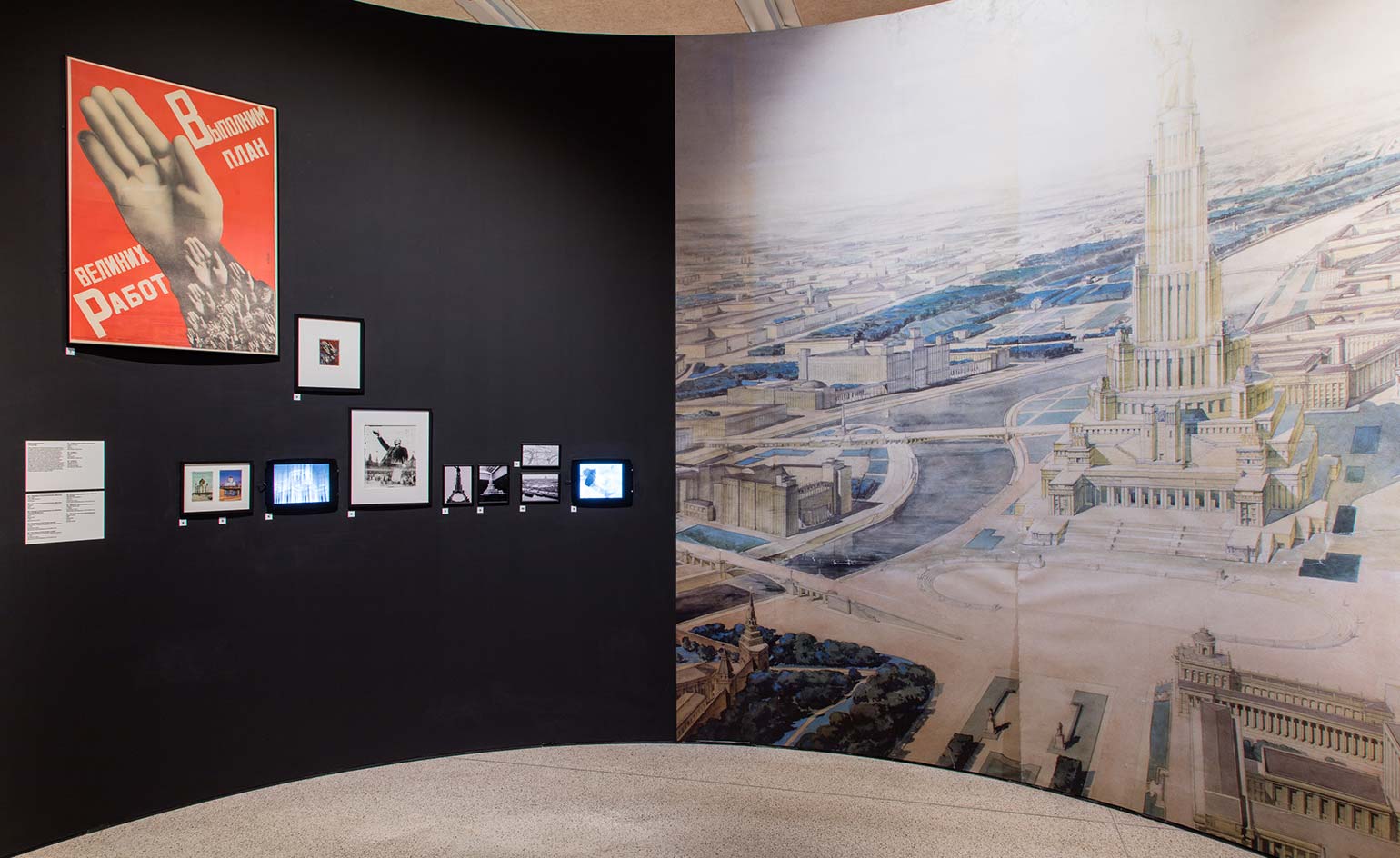
A new exhibition dedicated to unrealised Soviet architecture has opened at London’s Design Museum to mark the centenary of the Russian Revolution. Called 'Imagine Moscow: Architecture, Propaganda, Revolution', the show explores the Soviet architects’ idealistic vision of Moscow through six unbuilt architectural landmarks designed in the 1920s and 30s following the Revolution.
‘This was a time when architecture, politics and society were explicitly linked,’ says curator Eszter Steierhoffer. ‘In the period that followed the revolution, architects were trying to come up with a blueprint for a new society in order to better the world. In the later Socialist realism period when Stalin had consolidated his power it somehow shifted. It became about propaganda.’
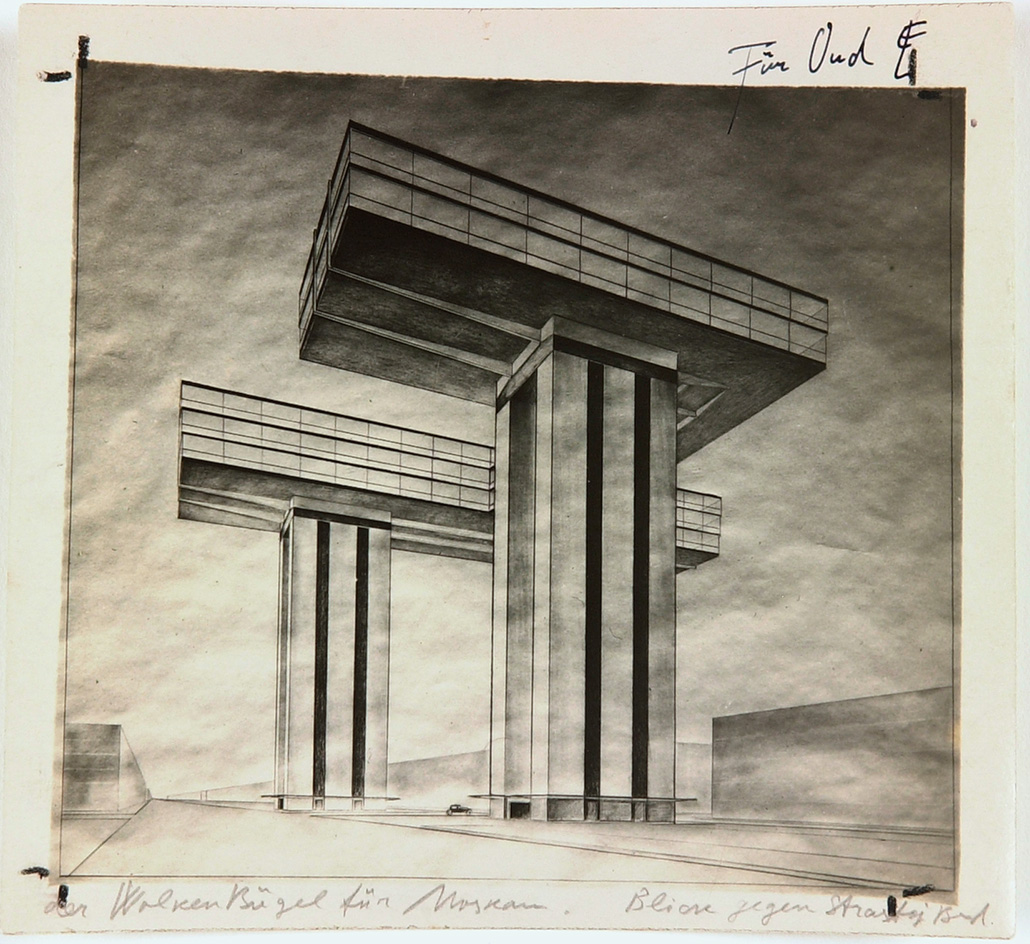
El Lissitzky’s photo of his ’Design Cloud Iron’ design
The shift is reflected in the exhibition’s design. Conceived by Berlin studio Kuehn Malvezzi and London-based Kellenberger-White, the show’s layout takes the form of a descending spiral – a highly symbolic architectural form of the time. Large-scale elements evoke the heavy, geometric forms of the era, while imagery displayed on huge light boards encourages viewers to look up to observe the imposing buildings, just the way in which the architects had intended their designs to be seen.
Opening with Lissitzky’s Cloud Iron – a series of eight lightweight horizontal skyscrapers that were designed to address the problem of overcrowding and the inadequacy of public transport in the city – each of the exhibition’s featured projects address the different building blocks of socialist society including communal living, work, education and communication while also touching upon current issues such as globalisation and gender politics.
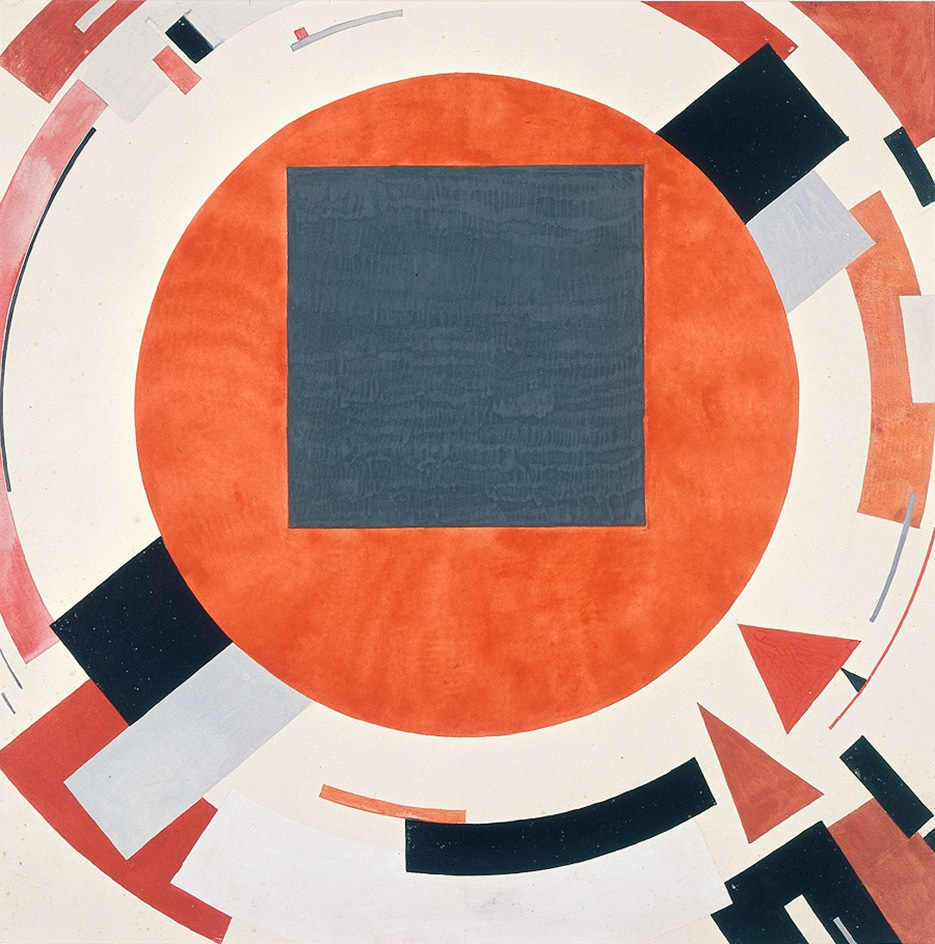
'Proun' by El Lissitzky, 1922
‘There is an extreme freshness to the architectural language,’ says Steierhoffer, referencing in particular the work of Yakov Chernikhov, whose visionary architectural drawings inspired the likes of Zaha Hadid, Rem Koolhaas and Peter Eisenmann. ‘But also in the ideas that they imply and the themes that they question. The work is so contemporary. The show is about architecture but really it's mostly about life and how a new life was imagined.’
Drawings and models of each of the six buildings are displayed alongside a selection of artworks and propaganda materials from the time. These reveal the increasingly controlling and dark ambitions behind the architecture. Radical thinker Nikolay Kuzmin’s 'Scientific Organization of Life' – a minute-by-minute timetable that maps out an 'ideal' daily routine for coal miners – is displayed next to the plans and drawings for Ladovsky’s Communal House. This spiral-shaped building for communal living purported to be emancipating the female from the toils of the traditional family unit, but had the ultimate goal of making women more effective members of the workforce.
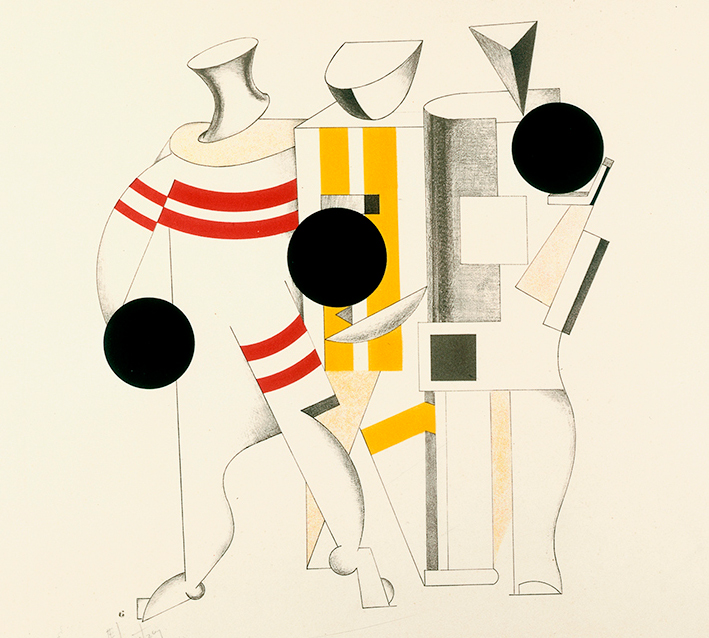
'Sportsmen' by El Lissitzky, from the design of the electro mechanical show 'Victory Over The Sun', 1923
The exhibition’s ascending spiral route ends with Boris Iofan’s Palace of the Soviets, which is described as ‘propaganda in built form’. Intended for one of Moscow’s most prominent sites, this ultimate monument to the State’s new centralised power would have been the tallest building in the world.
Reflecting on the lessons that can be learned from this revolutionary period, Steierhoffer reflects: ‘Today we are living in a globalised, capitalist society and one thing I fear is lost is the explicit relationship to politics and social issues when we talk about architecture. It’s interesting to be confronted by these early ideas that are so resonant.’
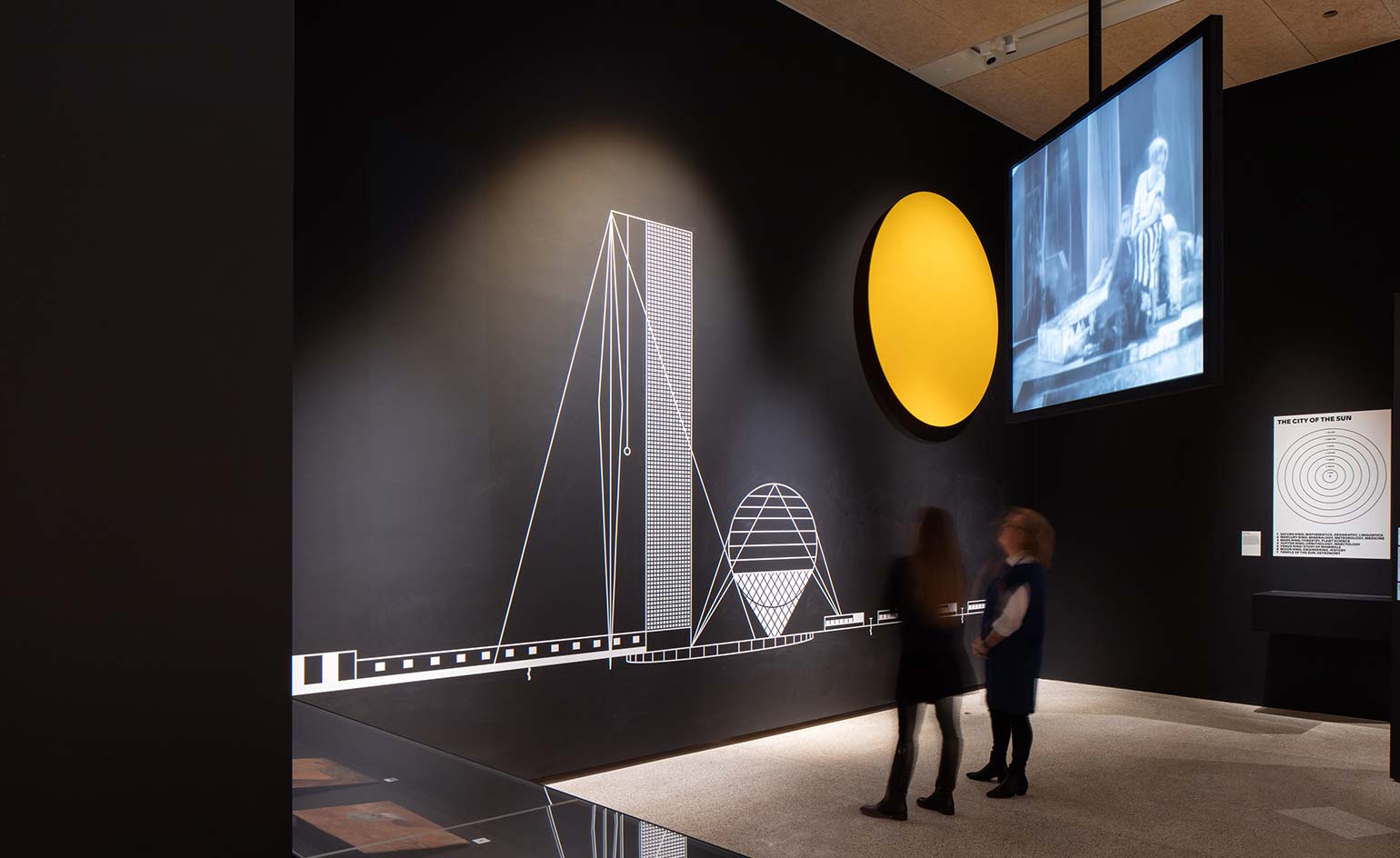
The exhibition explores the Soviet architects’ idealistic vision of Moscow through six unbuilt architectural landmarks designed in the 1920s and 30s following the Revolution.

Drawings of Boris Iofan’s imagined Palace of the Soviets, on display in 'Imagine Moscow' at London's Design Museum
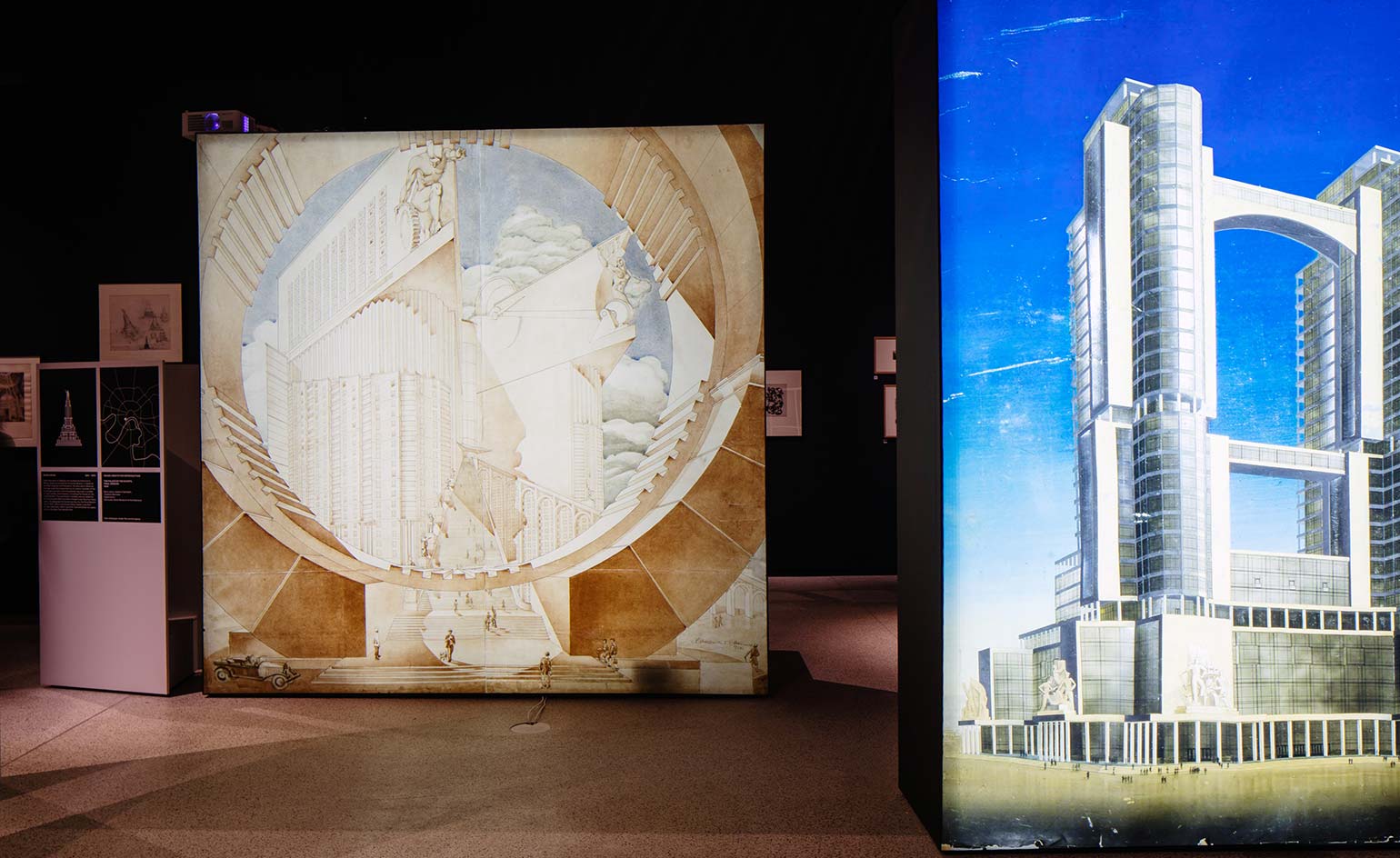
Conceived by Berlin studio Kuehn Malvezzi and London-based Kellenberger-White, the show’s layout takes the form of a descending spiral.
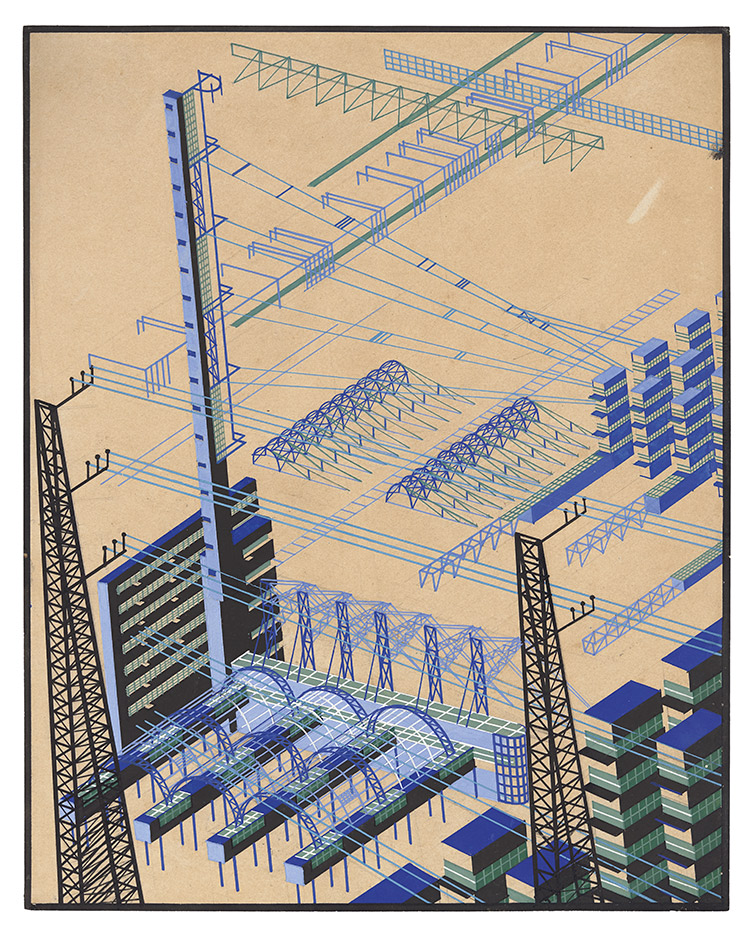
'Composition on a theme of an industrial area with buildings and metal constructions' by Yakov Chernikov, 1924
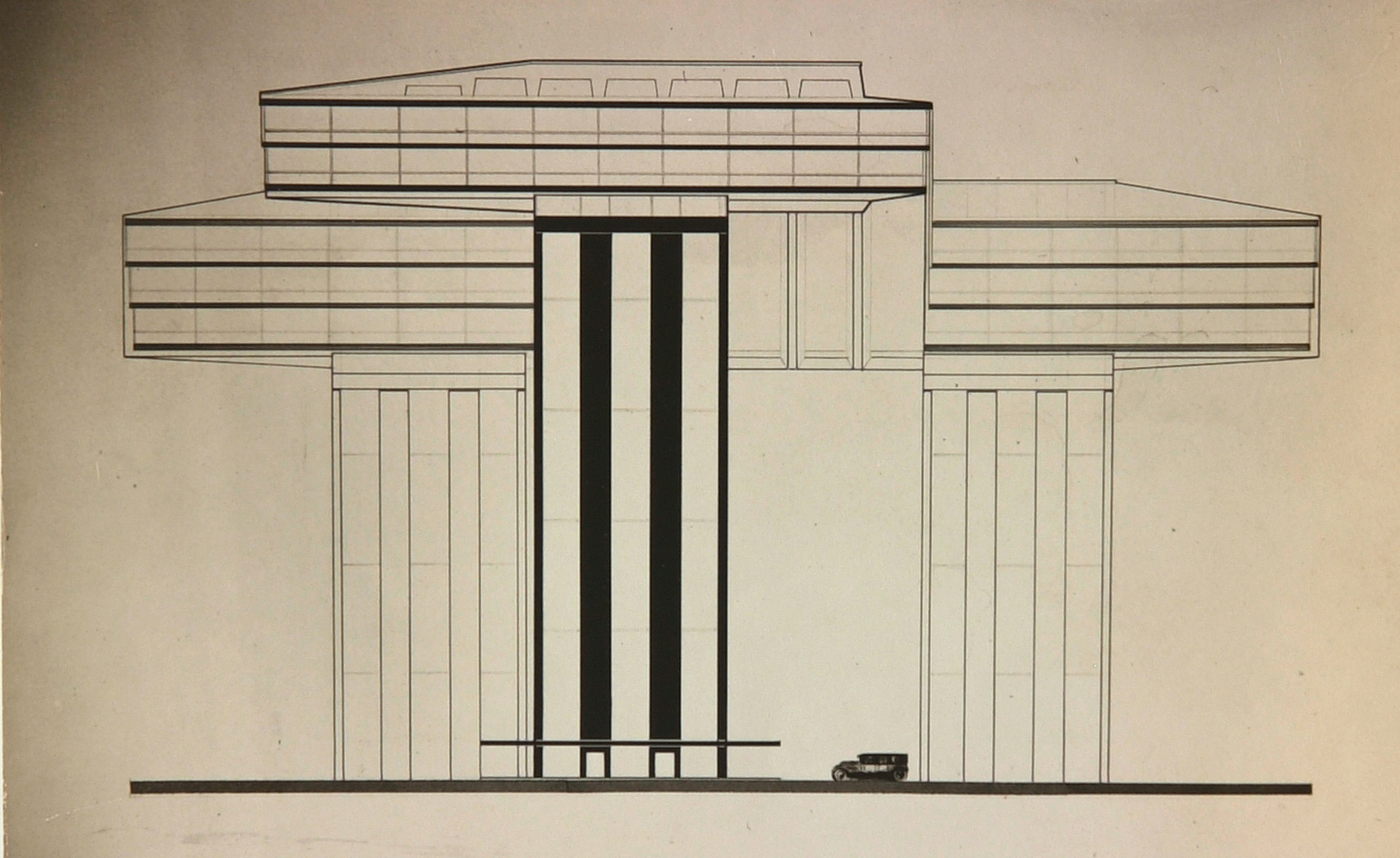
Made up of eight lightweight horizontal skyscrapers, El Lissitzky’s futuristic Cloud Iron addressed Moscow’s pressing urban problem of overcrowding and the inadequacy of public transport. Each of the eight buildings directly connected offices and living space on the upper floors with new tram and metro stations on the lower floors
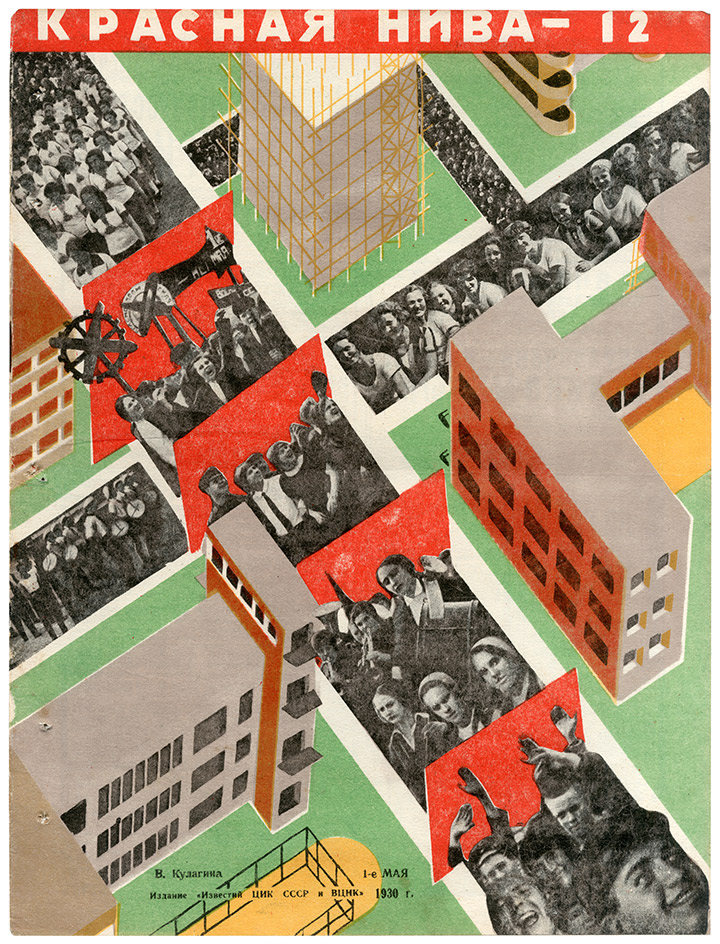
Valentina Kulagina's '1st of May', for Krasnaya Niva, 1930.
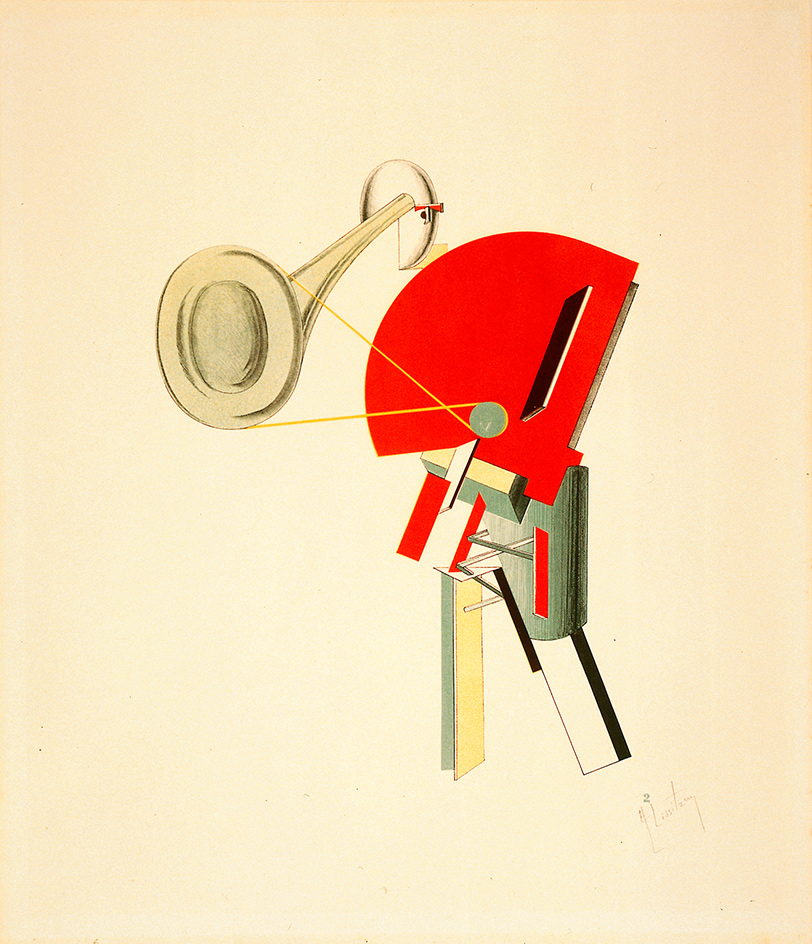
'The Announcer' by El Lissitzky, from the design of the electro mechanical show 'Victory Over The Sun', 1923
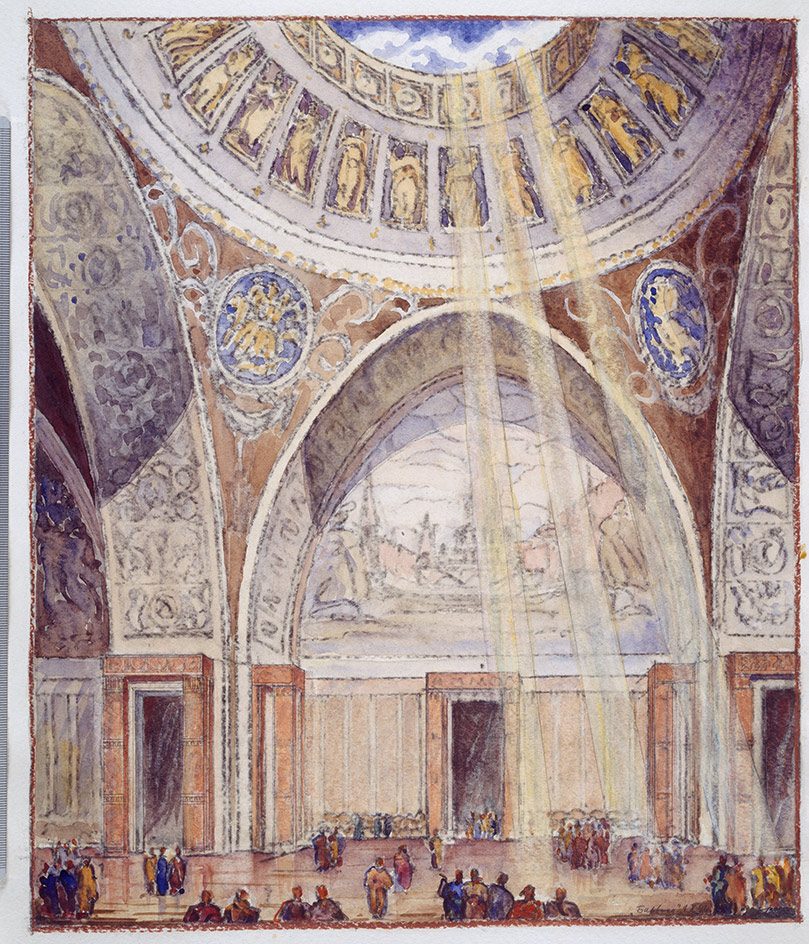
Boris Iofan’s winning entry for the Palace of the Soviets was the ultimate monument of Soviet power at the time. Set to become the tallest building in the world, the monolithic design was topped with a 100m statue of Lenin. Construction started in 1937 but was terminated due to the German invasion in 1941
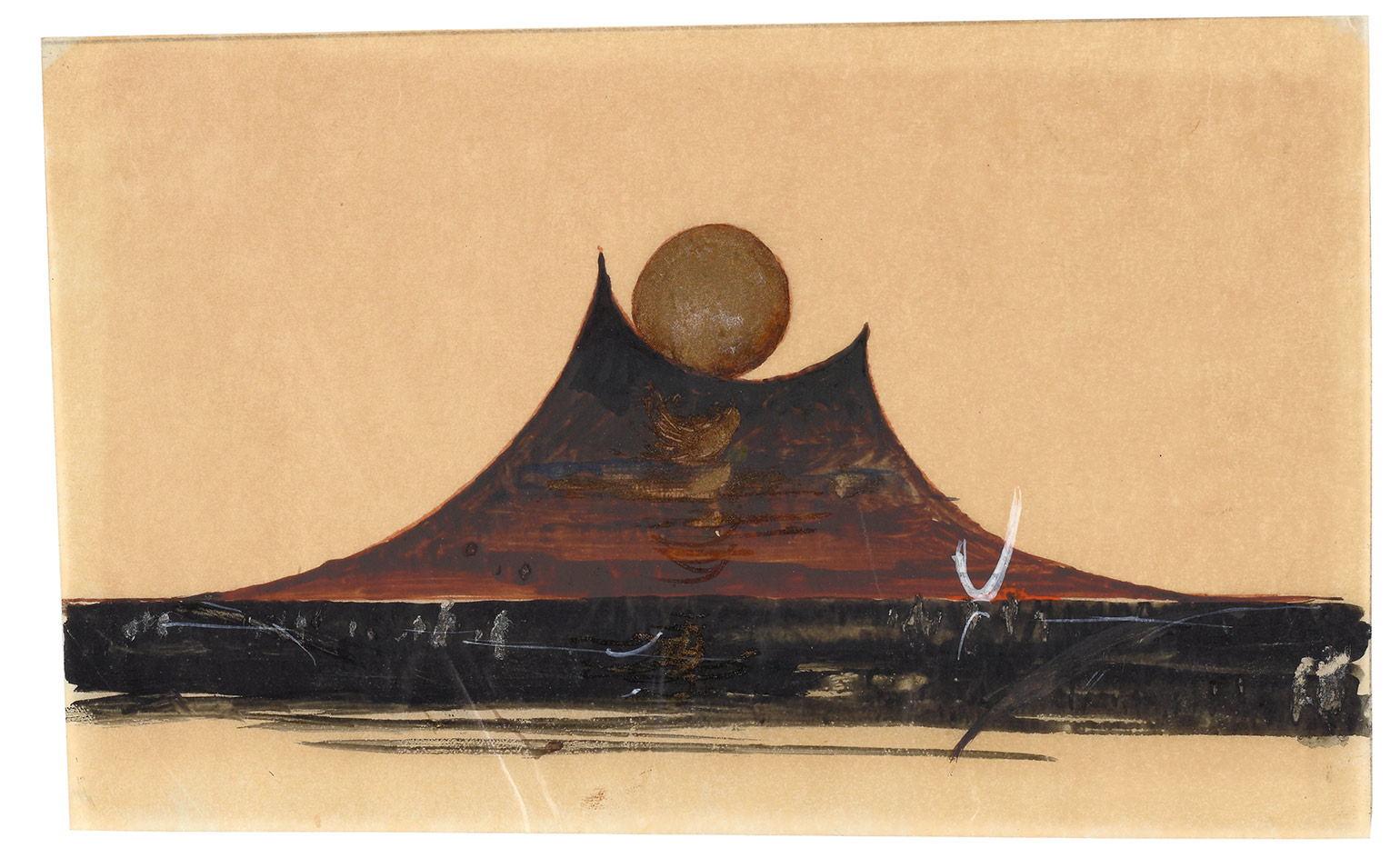
A monumental library and planetarium designed by Ivan Leonidov, called the Lenin Institute, had the aim of congregating all human knowledge and to educate the new Soviet man. The circular volume of the building was designed to enclose an auditorium, while the gravity defying tower served as motorised book storage
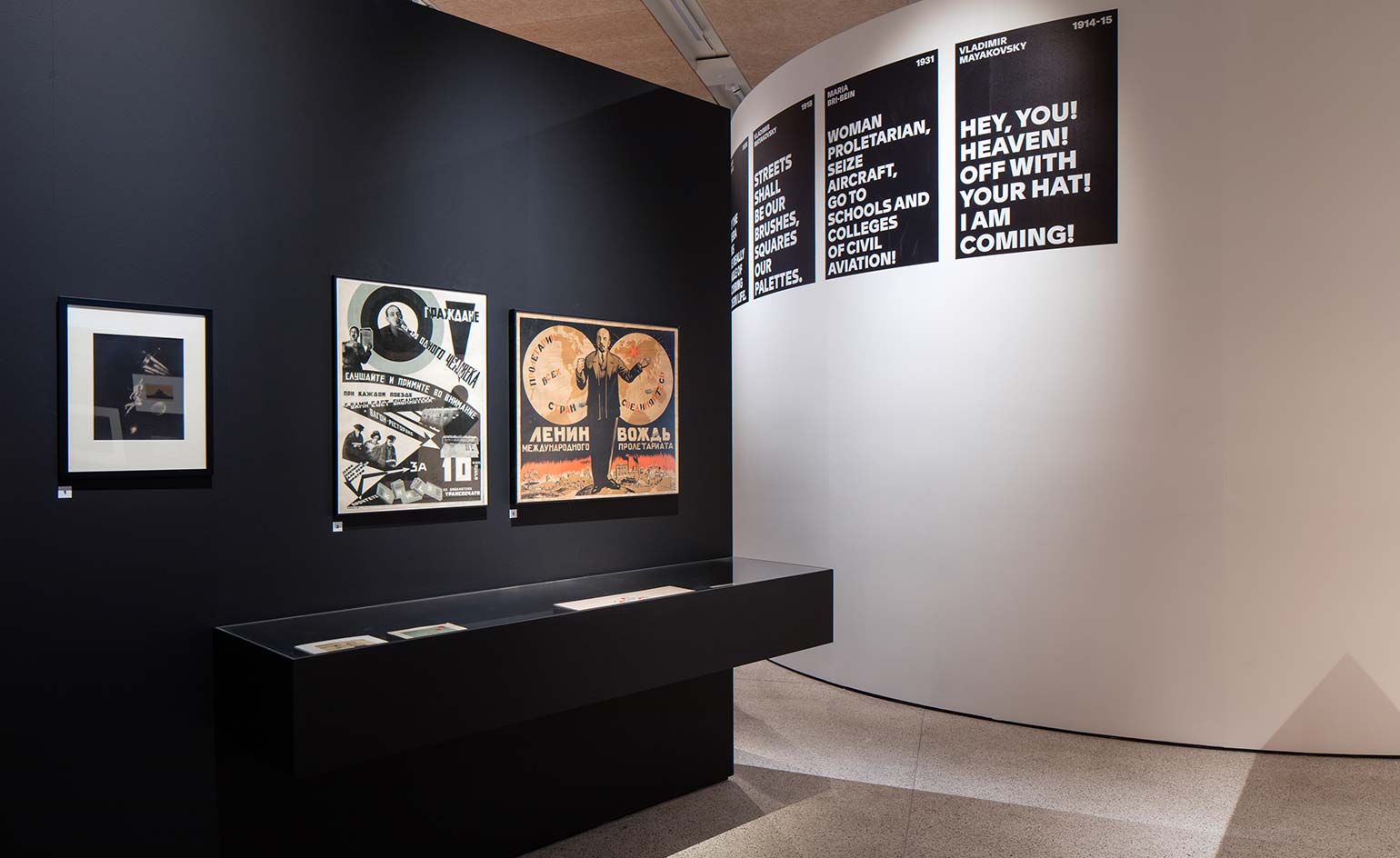
Imagery displayed on huge light boards encourages viewers to look up to observe the imposing buildings, just the way in which the architects had intended their designs to be seen.
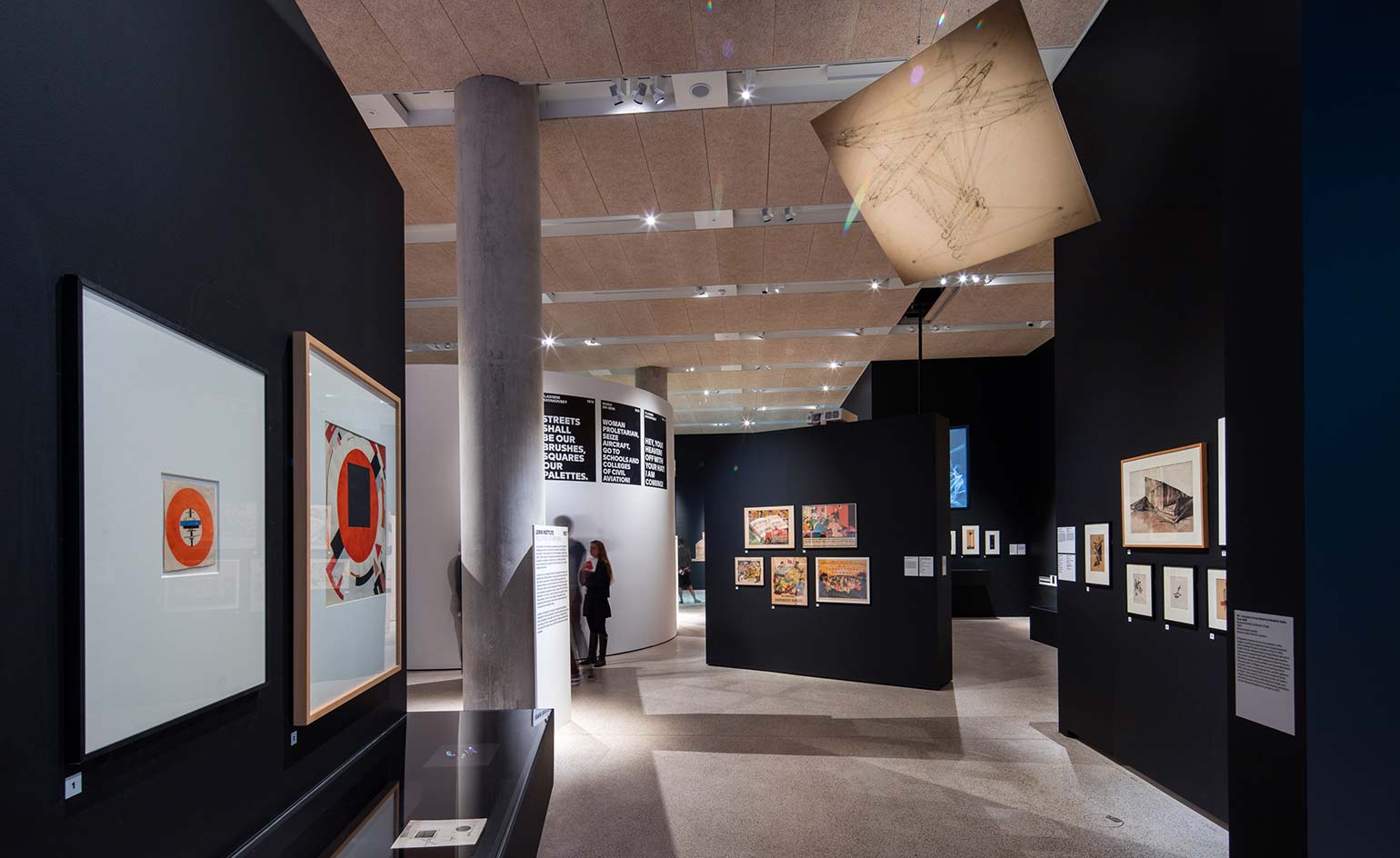
Large-scale elements evoke the heavy, geometric forms of the era.
INFORMATION
’Imagine Moscow: Architecture, Propaganda, Revolution’ is on view until 4 June. For more information, visit the Design Museum website
ADDRESS
Receive our daily digest of inspiration, escapism and design stories from around the world direct to your inbox.
Design Museum
24–238 Kensington High Street
London W8 6AG
Ali Morris is a UK-based editor, writer and creative consultant specialising in design, interiors and architecture. In her 16 years as a design writer, Ali has travelled the world, crafting articles about creative projects, products, places and people for titles such as Dezeen, Wallpaper* and Kinfolk.
-
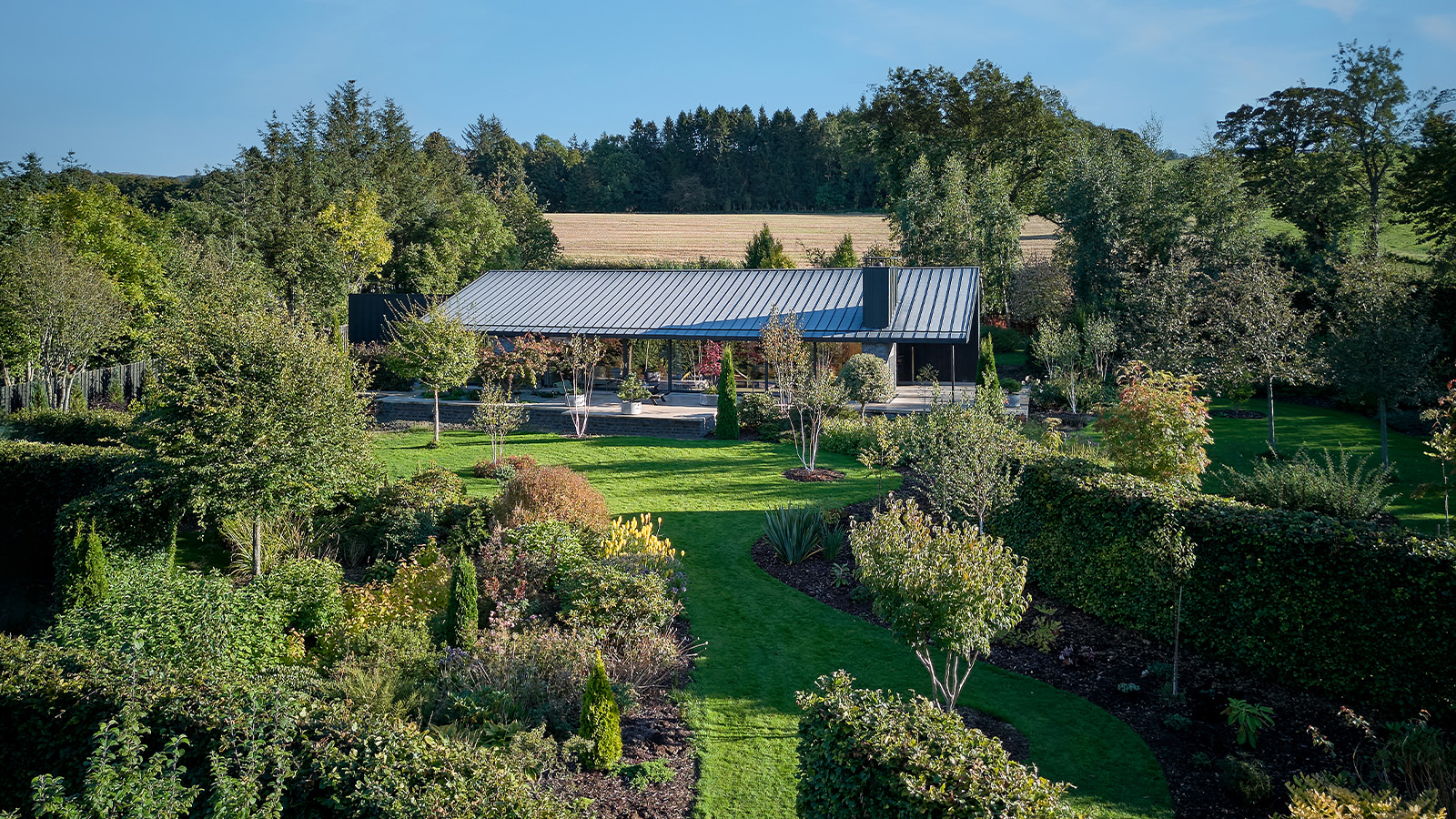 A compact Scottish home is a 'sunny place,' nestled into its thriving orchard setting
A compact Scottish home is a 'sunny place,' nestled into its thriving orchard settingGrianan (Gaelic for 'sunny place') is a single-storey Scottish home by Cameron Webster Architects set in rural Stirlingshire
-
 7 colours that will define 2026, from rich gold to glacier blue
7 colours that will define 2026, from rich gold to glacier blueThese moody hues, versatile neutrals and vivid shades will shape the new year, according to trend forecasters
-
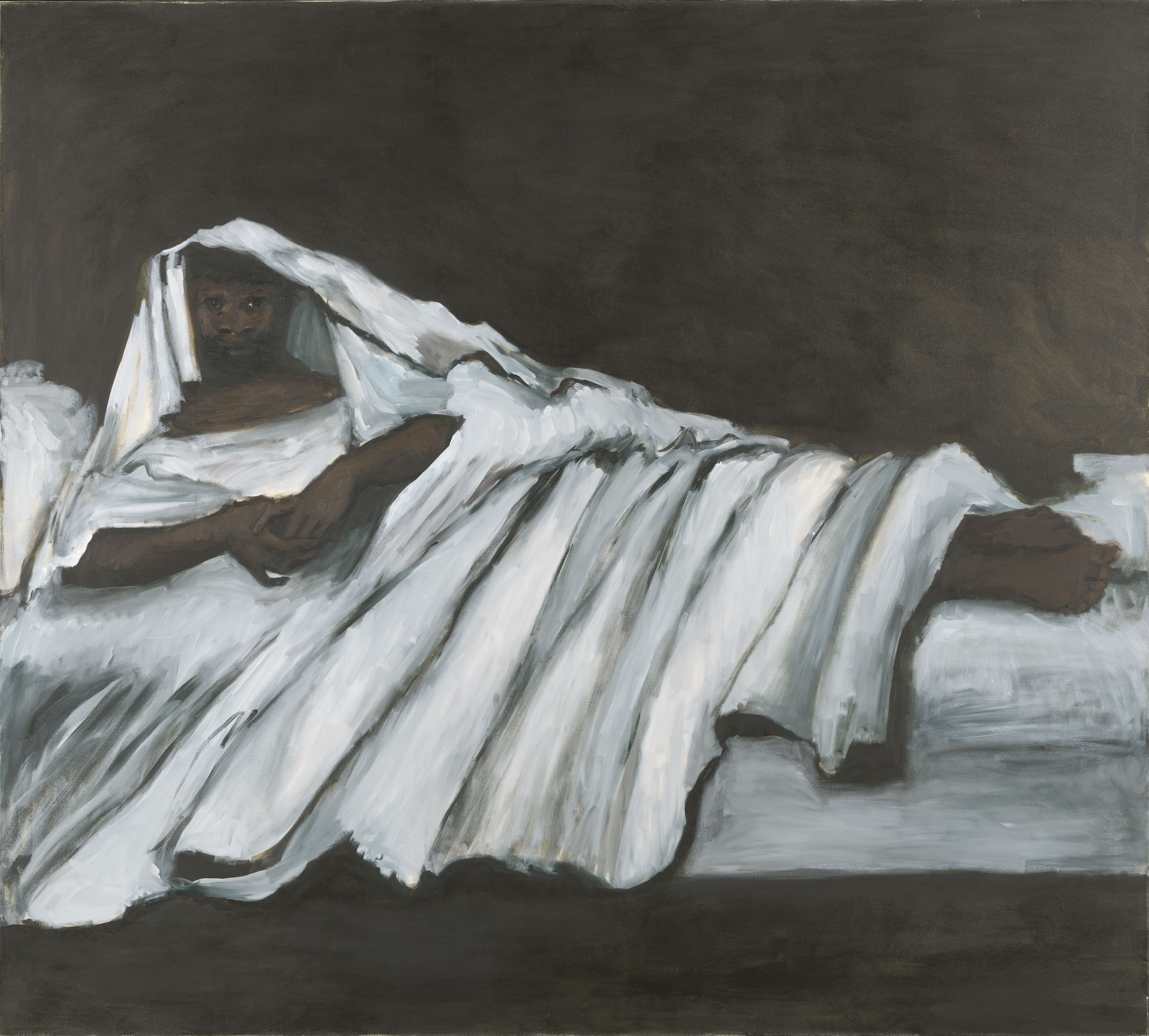 In Norway, discover 1000 years of Queer expression in Islamic Art
In Norway, discover 1000 years of Queer expression in Islamic Art'Deviant Ornaments' at the National Museum of Norway examines the far-reaching history of Queer art
-
 Soviet brutalist architecture: beyond the genre's striking image
Soviet brutalist architecture: beyond the genre's striking imageSoviet brutalist architecture offers eye-catching imagery; we delve into the genre’s daring concepts and look beyond its buildings’ photogenic richness
-
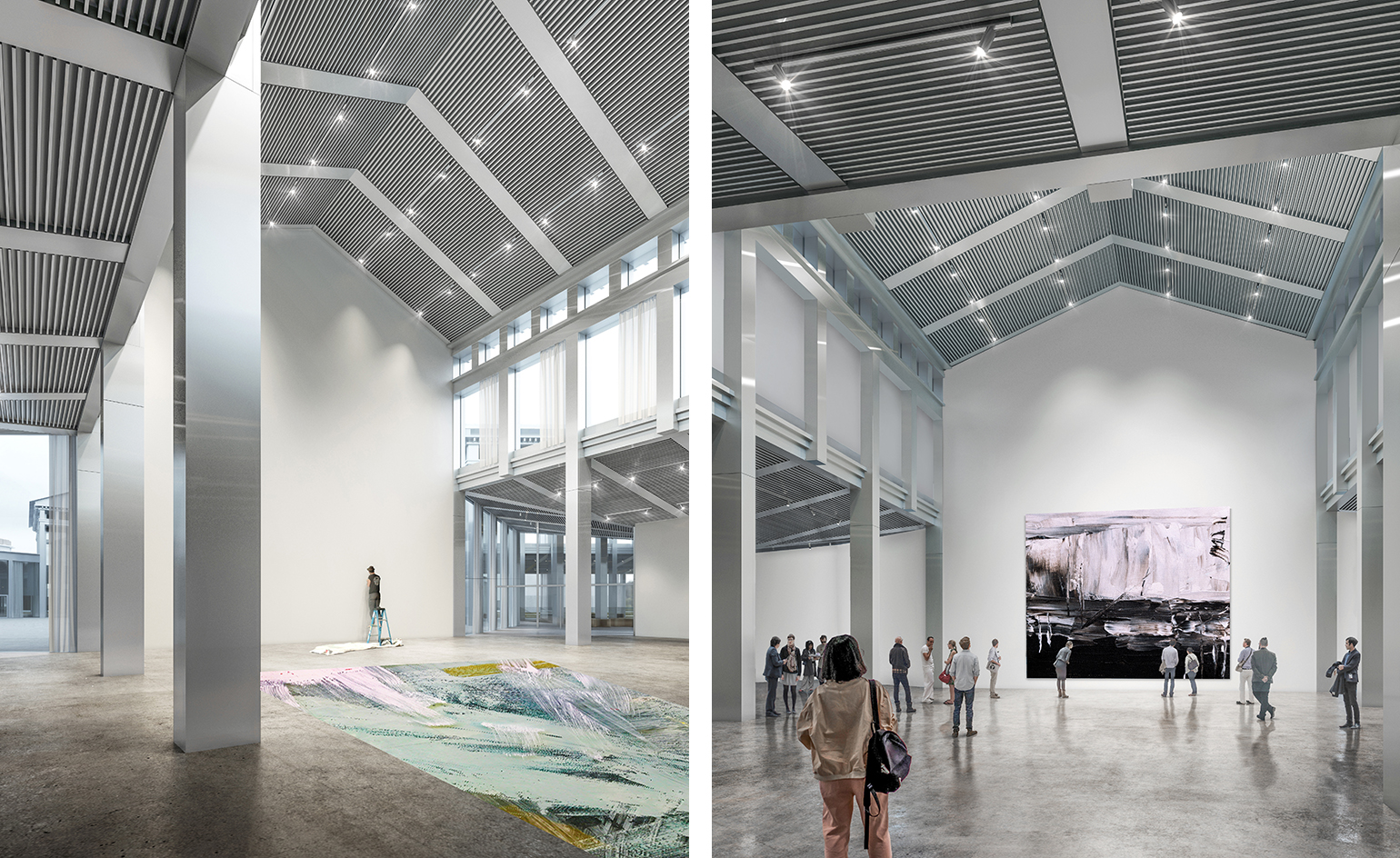 SANAA to resurrect Hexagon pavilion for Moscow’s Garage Museum extension
SANAA to resurrect Hexagon pavilion for Moscow’s Garage Museum extensionJapanese firm SANAA will overhaul the Hexagon pavilion, a 1920s Ivan Zholtovsky-designed structure in Gorky Park, for a Garage Museum extension
-
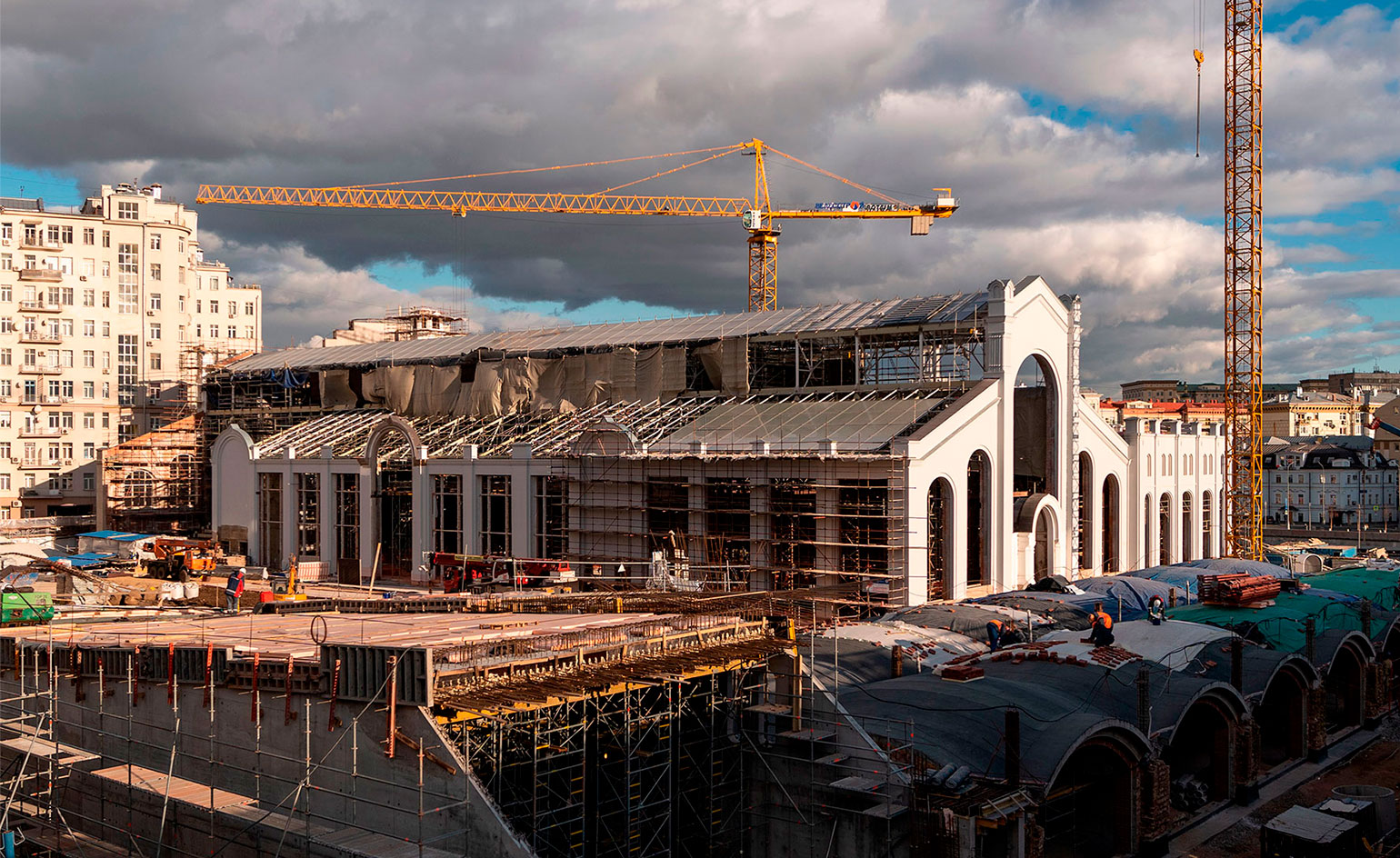 Renzo Piano’s GES-2 is a site of wonder
Renzo Piano’s GES-2 is a site of wonderThe GES-2's building site in Moscow is so glorious the half-constructed structure has already got the design world talking
-
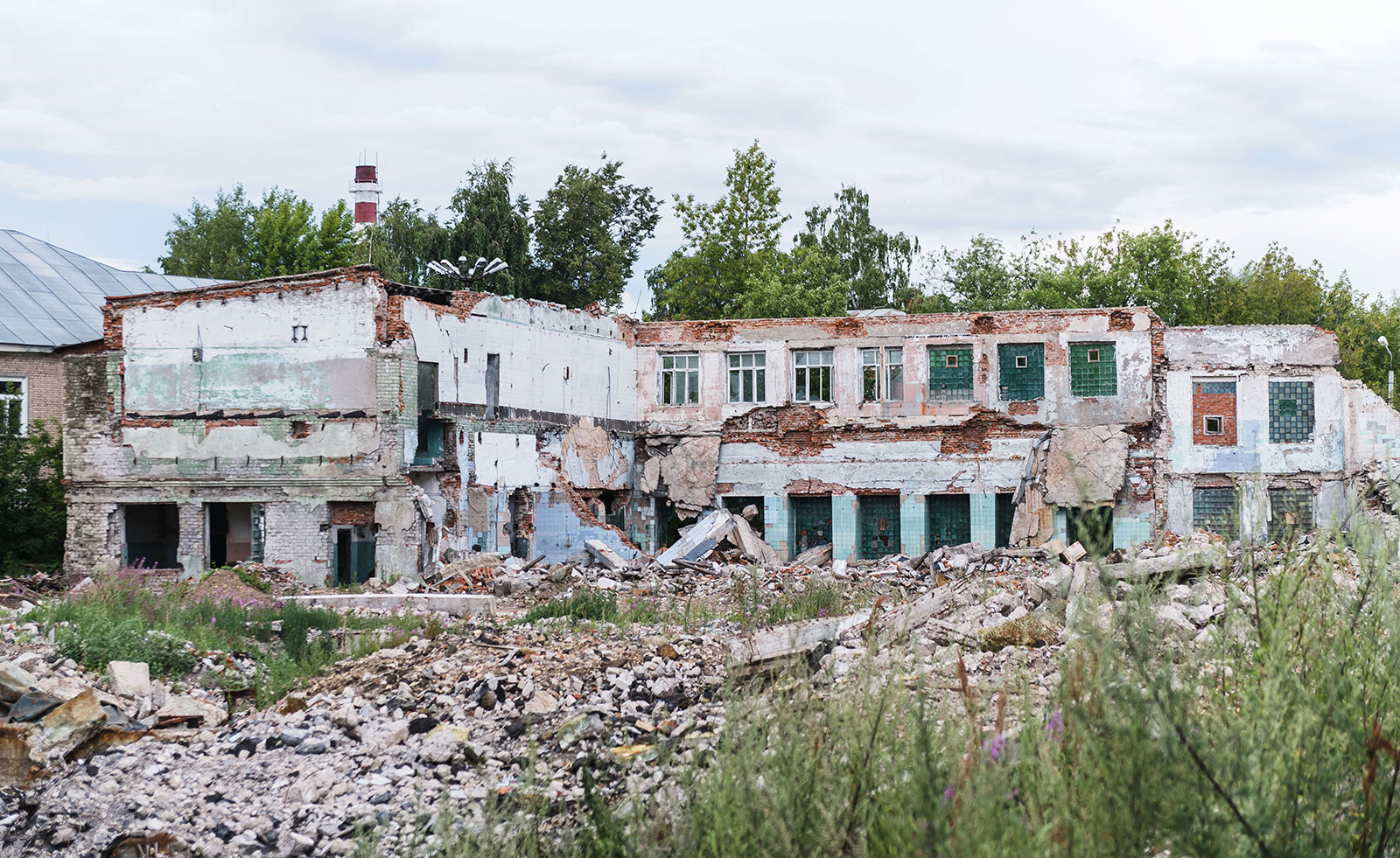 Young architects tasked to rethink Russia’s abandoned industrial sites in Kazan
Young architects tasked to rethink Russia’s abandoned industrial sites in KazanFor the second Russian Architecture Biennale for Young Architects, curator Sergei Tchoban, architect and founder of the Tchoban Foundation in Berlin, looked out into Russia’s post-industrial landscape and challenged Russian architects under 35 to propose some new solutions for a former faucet factory and a grain elevator near Kazan
-
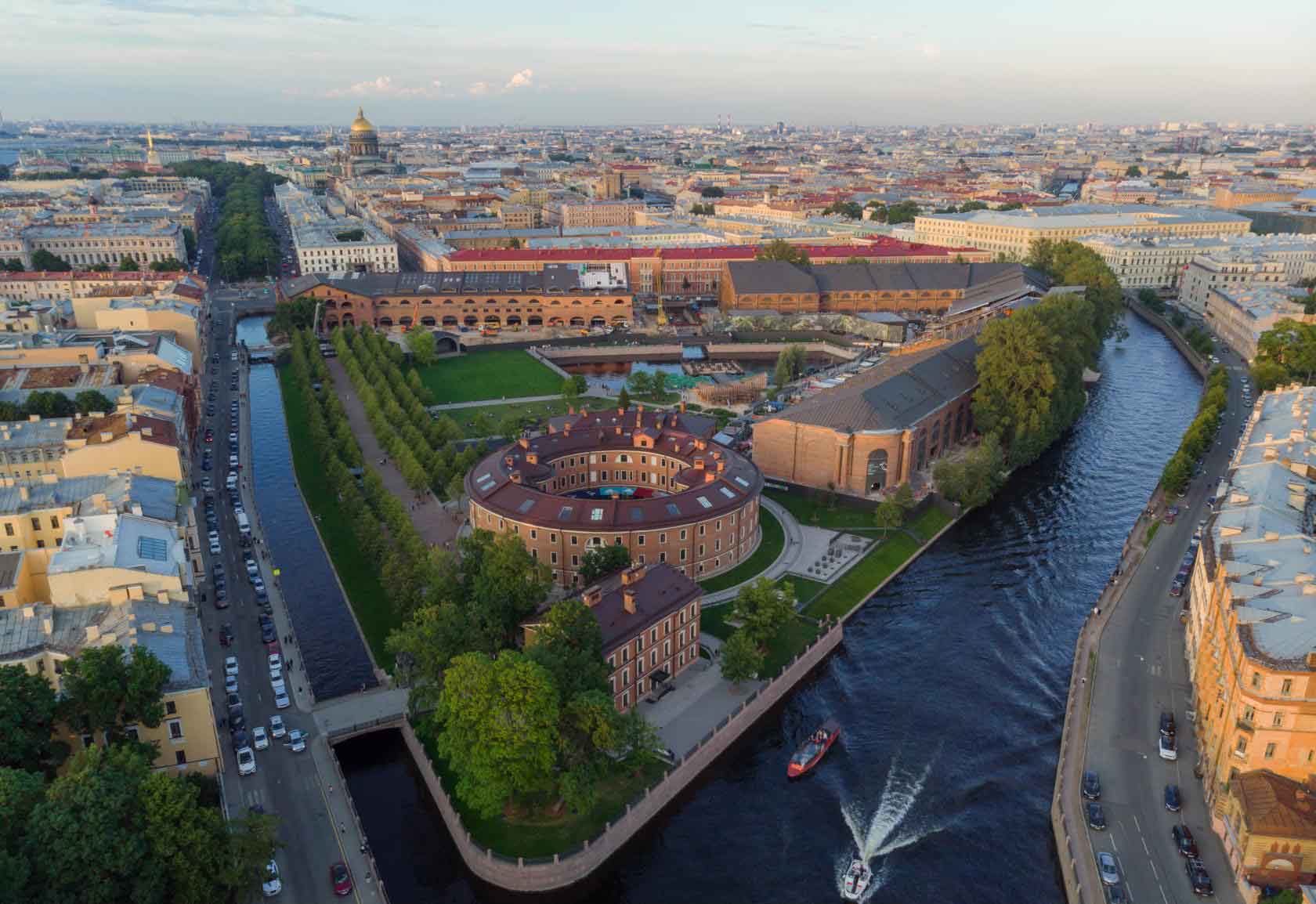 Touring St Petersburg’s New Holland Island and its ongoing transformation
Touring St Petersburg’s New Holland Island and its ongoing transformationNew Holland Island is a historic artificial island in Saint Petersburg, Russia, dating from the 18th century. Now, under an architect's guidance, development continues apace, transforming it into a vibrant cultural hub
-
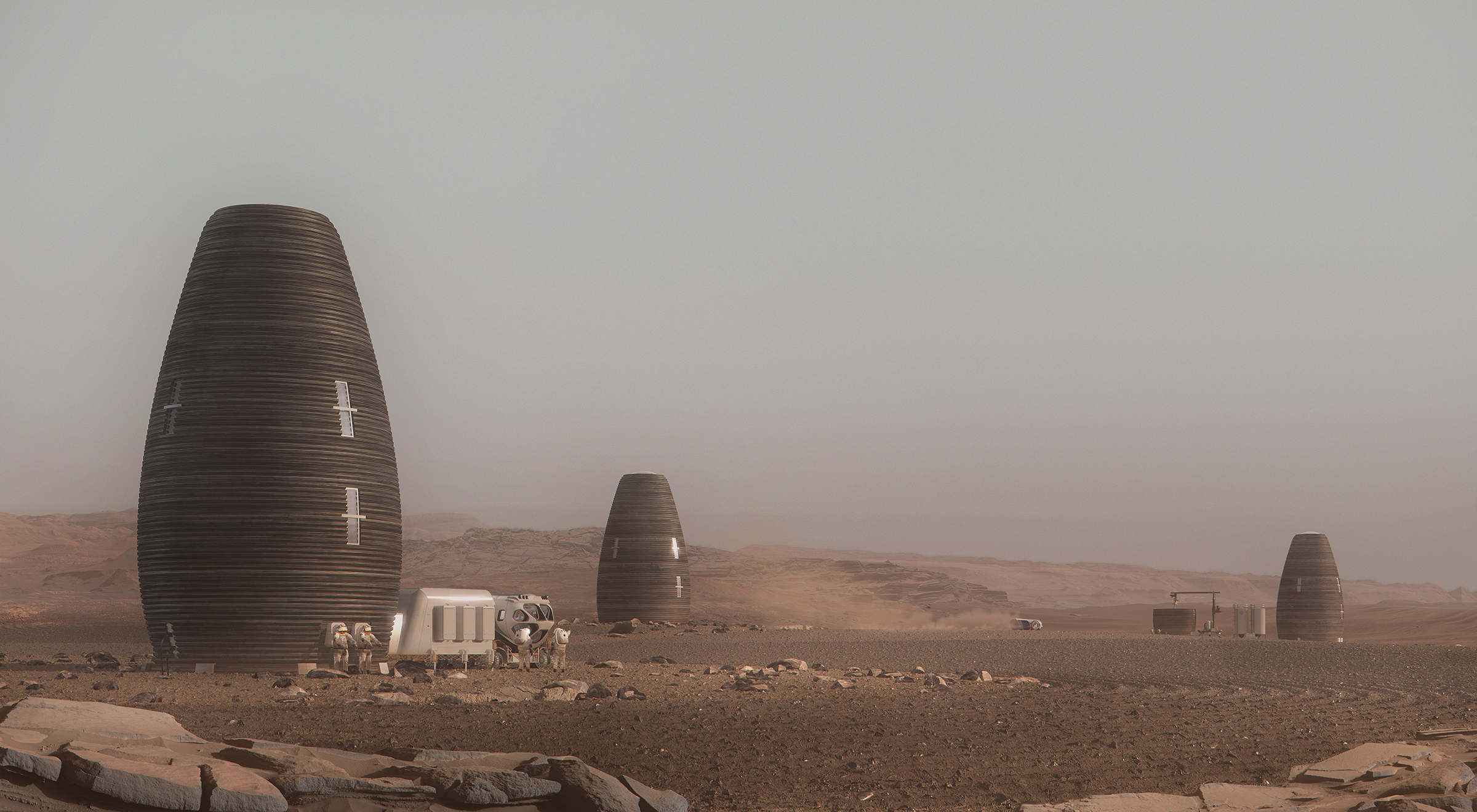 Bold Mars architecture heralds a new era for spatial exploration
Bold Mars architecture heralds a new era for spatial explorationAhead of London Design Museum's ‘Moving To Mars’ exhibition, we explore the future of space architecture on the Red Planet
-
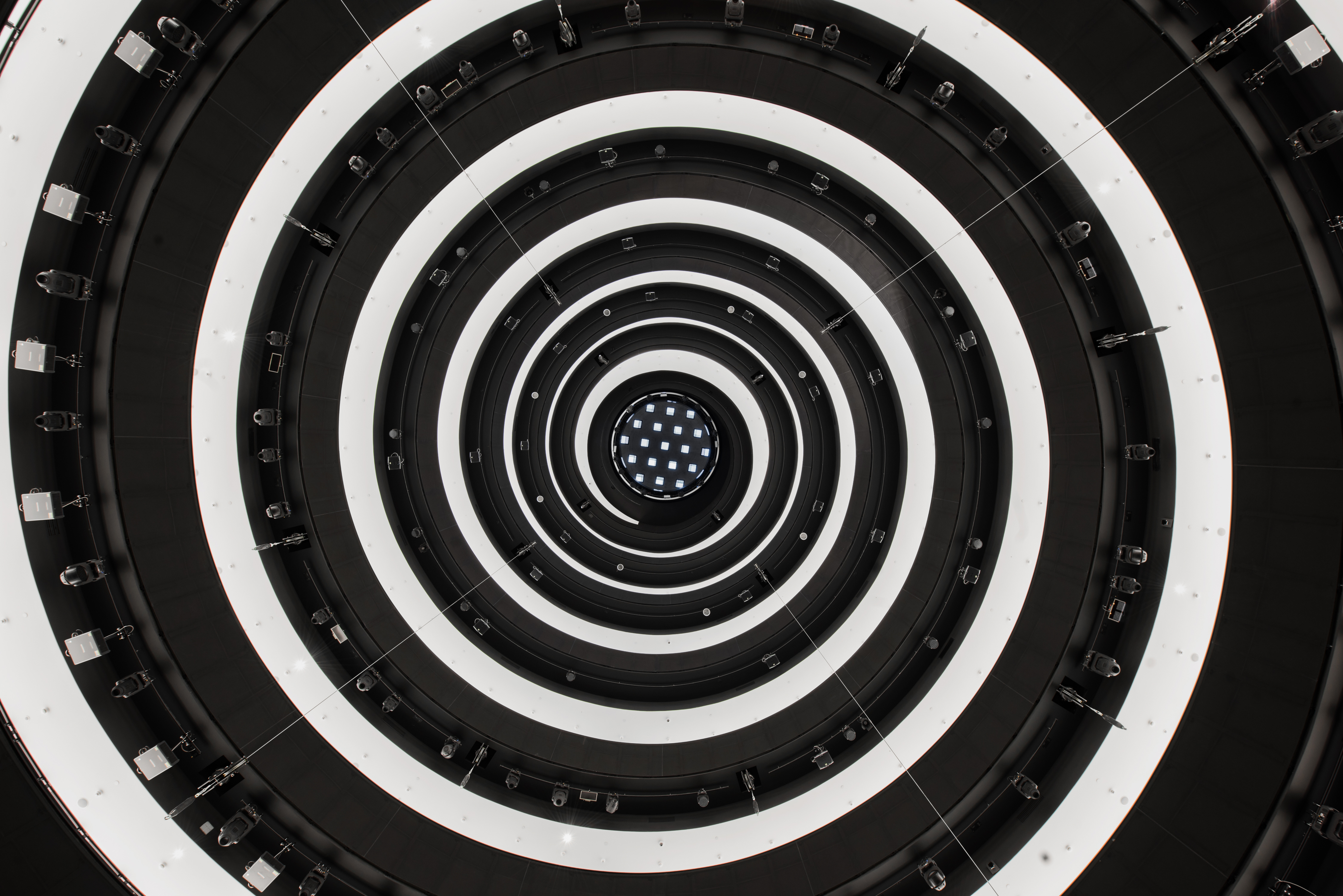 Architectural landmark Matrex joins Moscow’s Skolkovo tech park
Architectural landmark Matrex joins Moscow’s Skolkovo tech park -
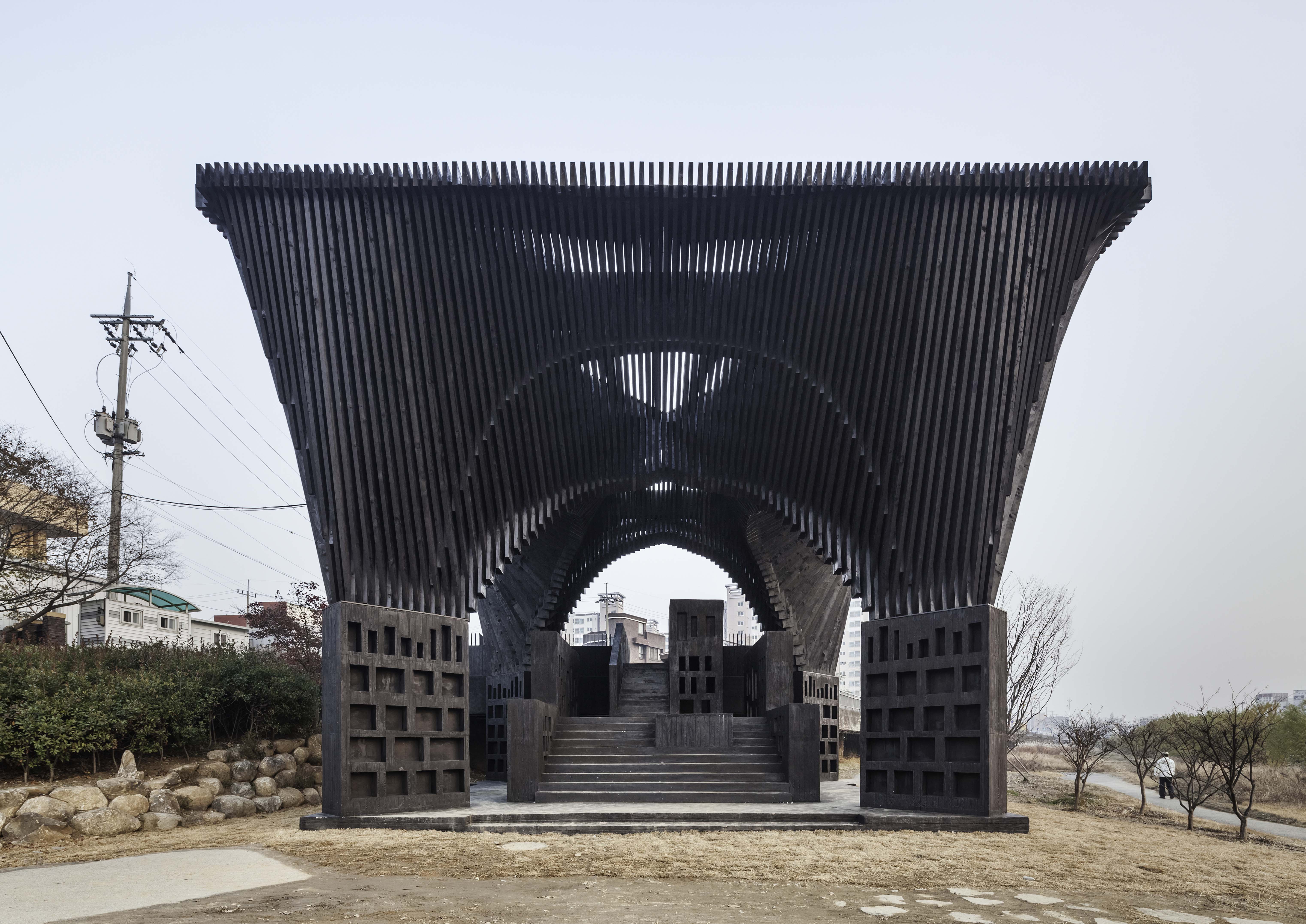 David Adjaye’s 21st century monuments and memorials explored at London’s Design Museum
David Adjaye’s 21st century monuments and memorials explored at London’s Design Museum